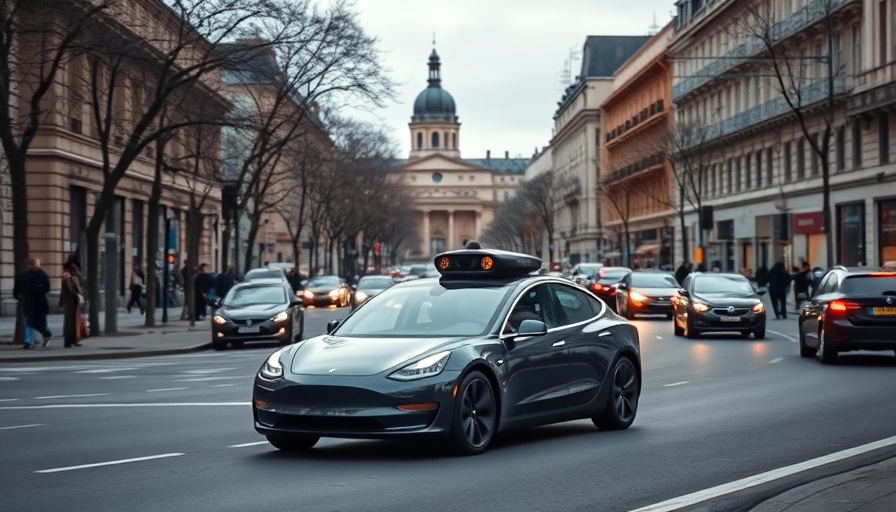
Tesla's Bold Step into the Future of Ride-Hailing
Tesla is not just a car company; it's at the forefront of autonomous vehicle technology. With the recent launch of its 'FSD Supervised' ride-hail testing in Austin and the Bay Area, Tesla aims to revolutionize the transportation industry. This service allows select employees to use the company's advanced driver assistance system, known as Full Self-Driving (FSD), to hail rides while still requiring a safety driver to ensure safety.
Unveiling FSD Supervised: Features and Functionality
Just last month, Tesla announced that its FSD Supervised ride-hailing feature is now live for a limited group of employees. This initial rollout is part of a larger plan that caters to the growing demands of urban transportation. The ride-hail service app will eventually be available to non-Tesla drivers, enabling anyone to hail a Tesla using the platform. The service has already seen over 1,500 trips and 15,000 miles driven, showcasing the system's capabilities.
A Vision Ahead: Robotaxi Launch Set for Summer
Tesla's ultimate goal is to launch a fully operational robotaxi service later this summer, with the initial rollout planned in Austin. Elon Musk teased that the company intends to operate 10 to 20 vehicles from day one. This ambitious initiative is reminiscent of Waymo's earlier practices, where employee testing precedes public availability, allowing the company to iron out any operational kinks securely.
Understanding the Implications of Supervised vs. Unsupervised FSD
The distinction between 'supervised' and 'unsupervised' FSD is critical. The current version requires a safety driver at the wheel, which is a necessary measure for ensuring safe operations while navigating various road conditions. As these tests progress, many wonder about the transition to an unsupervised version—the version Musk anticipates will be ready soon. While having no driver may seem inviting for innovation, safety regulations in California will play a critical role in how quickly Tesla can move forward.
How Ride-Hailing Services are Evolving
Ride-hailing services have grown significantly in recent years, spurred by advancements in technology. Traditional companies like Uber and Lyft have normalized the concept, and now, as automated technology comes into play, the industry is poised for disruptive change. Prospective riders and city planners alike should consider how autonomy will shape urban infrastructure. Questions arise about regulatory frameworks, vehicle safety standards, and impacts on employment.
The Future of Urban Mobility: What to Expect
While Tesla has laid out a framework for rolling out its services, the future of ride-hailing is still uncertain. As various companies, including Zoox and Cruise, venture further into the autonomous driving space, competition will likely drive innovation at an accelerated pace. Consumers can expect increasingly connected services customized to their needs, be it through shared rides or on-demand autonomous vehicles.
Final Thoughts: Embracing Change in Transportation
The emergence of autonomous ride-hailing services like Tesla's FSD Supervised will undoubtedly reshape mobility in urban environments. As companies work through the complexities of technological implementation, potential riders should remain engaged with these developments. It is not just a technological change; it signifies a cultural shift towards smarter transportation solutions.
 Add Row
Add Row  Add
Add 



Write A Comment